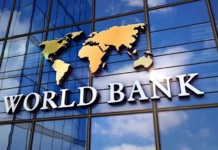 Luxury Apartments in Belgravia, London’s Most Sought-after Address
Luxury Apartments in Belgravia, London’s Most Sought-after Address
By Ugo Arinzeh, London: While 2012 was a year of tumult and uncertainty across many global cities, London retained its distinction as a relatively safe haven for international investment. The city continued to attract global interest and buyers particularly in the housing market which experienced 8.7% price growth in 2012 compared with -1.4% for New York, -4% for Paris and -6% for Geneva (Knight Frank Spring 2013 Residential Review).
Key drivers that continue to fuel demand include status as a global financial centre, relatively stable political environment, transparency and lifestyle benefits. London has also been the continued beneficiary of relative instability in other countries, especially the eurozone crisis, which has pushed Europeans, particularly the Italians and French, to seek safe haven in sterling denominated assets (though the overall market is still lead by Russian, US and Indian buyers). This has resulted in prices in prime Central London to be 53% higher than the post-downturn trough of March 2009 (and over 20% above the former peak of 2007).
However, 2012’s increase did see a slowing of price growth compared to previous years as the March budget announcements included a significant increase in the stamp duty top rate from 5% to 7% and the introduction of a 15% rate for assets owned by non-natural persons (NNPs). While those changes took effect immediately, a consultation over an annual charge on +£2M properties owned by these structures and possible reform of Capital Gains Tax were also announced. This created an air of uncertainty in the markets, as many buyers took a “wait and see” approach. Much needed clarity was provided with the December Finance Bill, but suppression of buyer interest and the resulting reduction of 2012 volumes had already taken effect.
The make up of buyers in Central London was still heavily skewed toward foreigners. According to Knight Frank, the proportion of £1M+ sales in London to non-UK buyers was 51%, rising to 60% for properties priced over above £5M. Within London, South Kensington had the largest number of international buyers as a percentage of sales in 2012, while Knightsbridge, Kensington, Hyde Park and Belgravia continued to be top destinations for wealthy overseas buyers.
On the letting front, rents declined in 2012 after having experienced prolonged growth over the previous several years. Rental performance is strongly correlated to the strength of financial services jobs, as the sector experienced significant job losses in 2012 that are expected to continue in 2013. One data point from specialist City recruiter Morgan McKinsley registered a year-on-year drop in hiring activity of 24% in December 2012. However, while the City’s employment figures remain bleak, there is optimism coming from the technology and media sectors (which contributed 30% of all office leases). Additionally, overall demand for rental housing is very strong as the supply/demand ratio remains out of balance, favouring landlords.
London is estimated to have a continued and significant housing shortage over the next 20 years. Overall general consensus for growth and price appreciation in the London housing market for 2013 is generally flat. The employment situation in the financial services sector remains troubling but other sectors may make up the losses.
The pound was relatively weak in 2012 but a competitive exchange rate benefits London’s property sector and encourages foreign investment (recent economic outlook has put pressure on the pound, resulting in sterling-based assets becoming a better value for euro-denominated buyers). London remains at the top of most lists of places to live and its stature as a global financial centre is unlikely to change in the medium term.










[…] You can also find this article here […]
Comments are closed.